Lebanon is a small country on the Mediterranean coast, known for its stunning mountains, beaches, and ancient ruins. It is also home to a diverse range of bird species, both resident and migratory.
The varied landscape provides an ideal habitat for birds, with forests, wetlands, rocky cliffs, and agricultural plains offering different environments for different species.
From the majestic eagles and vultures to colorful songbirds and waterfowl, the birds of Lebanon present a fascinating sight for birdwatchers and nature lovers alike.
In this article, we will explore some of the most common and unique bird species found in Lebanon and their significance in the local ecosystem.
1. Phasianidae
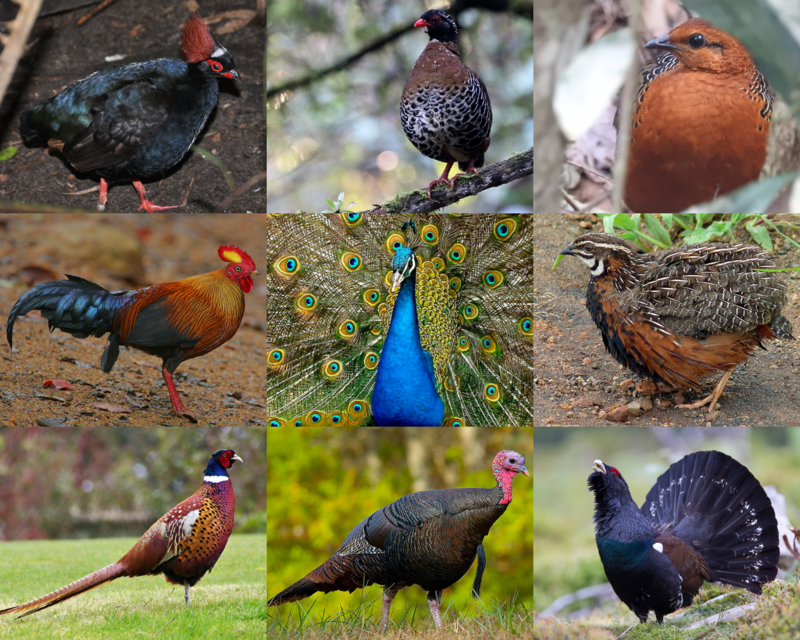
The Phasianidae family of birds is one that contains many popular gamebirds, with a total of 185 species divided across 54 genera.
These heavy ground-living birds include pheasants, partridges, junglefowl, chickens, and turkeys among others like Old World quail and peafowl.
This large family was formerly split into two subfamilies known as the Phasianinae and Perdicinae but this classification has since been changed to reflect more current scientific findings on them.
All these different types of birds have certain things in common such as their strong legs for scratching through leaves or soil looking for food items including insects, seeds, and other vegetation which makes up most of their diet.
They also all tend to be quite colorful in order to attract mates during breeding season when males will often display vibrant feathers or do dances around females in an attempt at courtship ritual displays.
The majority are monogamous creatures too although some may form short-term pair bonds before going off alone again once mating has taken place – either way.
There tends to be very little parental care given by adults after eggs have hatched so chicks need to fend for themselves right away.Scientific classification:
| Kingdom | Animalia |
| Phylum | Chordata |
| Class | Aves |
| Order | Galliformes |
| Superfamily | Phasianoidea |
| Family | Phasianidae Horsfield, 1821 |
Also Featured In: Most Common Birds in China, Turkey Birds You Should Know
2. Sandgrouse
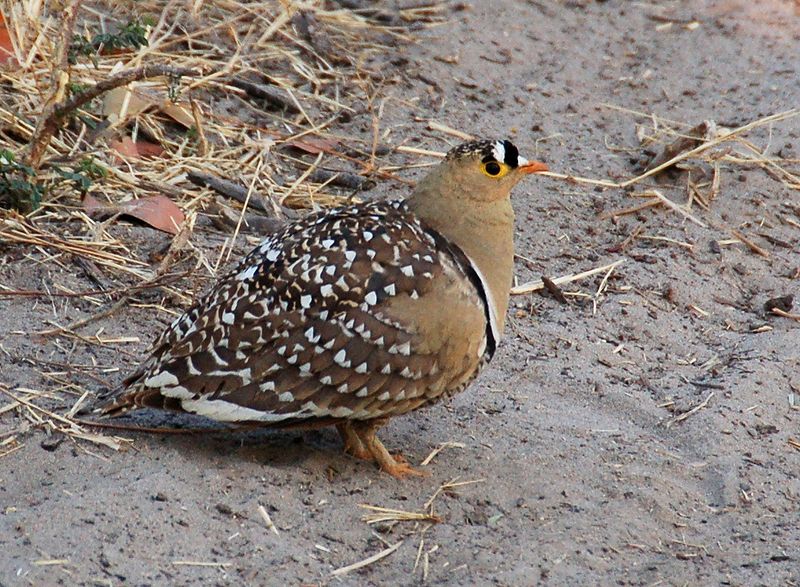
Sandgrouse is birds of the order Pterocliformes, found mainly in Africa and Asia. There are sixteen species belonging to two genera – Syrrhaptes from central Asia and Pterocles from Africa and other Asian countries.
They inhabit treeless areas such as deserts, steppes, scrubland, or savannas and tend to be ground-dwelling birds that feed on seeds.
Sandgrouse has adapted special features for survival in their harsh environment.
They possess well-developed feet with four toes used for walking over hot sand while keeping their body temperature cool at all times by regulating heat loss through their legs.
Their feathers also act like a sponge helping them absorb water before flying long distances back home where they then expel it using specialized glandular secretions located near the wings so that chicks can drink directly from an adult’s breast plumage.Scientific classification:
| Kingdom | Animalia |
| Phylum | Chordata |
| Class | Aves |
| Clade | Columbimorphae |
| Order | Pterocliformes Huxley, 1868 |
| Family | Pteroclidae Bonaparte, 1831 |
Also Featured In: Italian Birds You Should Know, Birds That Live in Iraq
3. Plovers

Plovers are a family of around 64-68 species of ground-dwelling birds, commonly found in open country such as fields, meadows and tundras.
They have short bills with webbed feet to help them forage through mud or shallow water.
Plover plumage is usually mottled brown though some species may have brighter colors on the head and wings.
These birds feed mainly on insects but can also eat small crustaceans and worms.
Plovers breed during springtime when they dig holes in sandy or pebbled beaches to lay their eggs which hatch after about 3 weeks incubation period.
They use distraction display behaviour by pretending an injury to the predators away from their nests if needed for protecting their young ones.Scientific classification:
| Kingdom | Animalia |
| Phylum | Chordata |
| Class | Aves |
| Order | Charadriiformes |
| Family | Charadriidae Leach, 1820 |
Also Featured In: Common Uzbekistan Birds, Birds of Sweden
4. Glareolidae
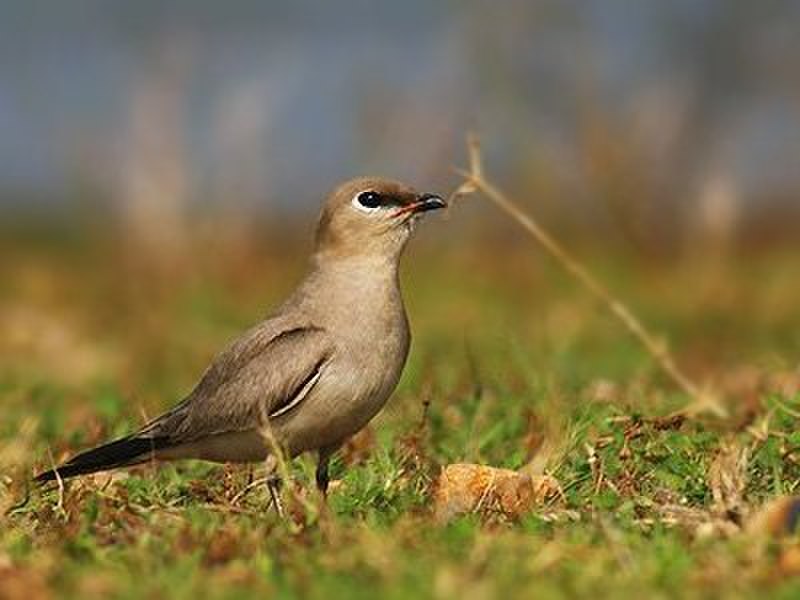
Glareolidae is a family of wading birds, consisting of four genera and 17 species. They are distinguished from other charadrii by their long bills which have a slight downward curve.
Glareolidae live around open grasslands and deserts, where they hunt for insects using the bill to probe into soil or vegetation.
Most species are found in Africa but two pratincoles inhabit parts of Europe and Asia as well.
Coursers tend to be larger than pratincoles with longer legs allowing them to run quickly across sandy dunes while feeding on small animals like lizards or spiders.
Pratincoles feed mainly on flying insects, snatching them out of midair with great agility during flight.
All glareolids share unique features such as large eyes that help it spot prey at night easily making this group one interesting bird family.Scientific classification:
| Kingdom | Animalia |
| Phylum | Chordata |
| Class | Aves |
| Order | Charadriiformes |
| Suborder | Lari |
| Family | Glareolidae CL Brehm, 1831 |
Also Featured In: Native Birds of Kazakhstan, Common Denmark Birds
5. Bustard
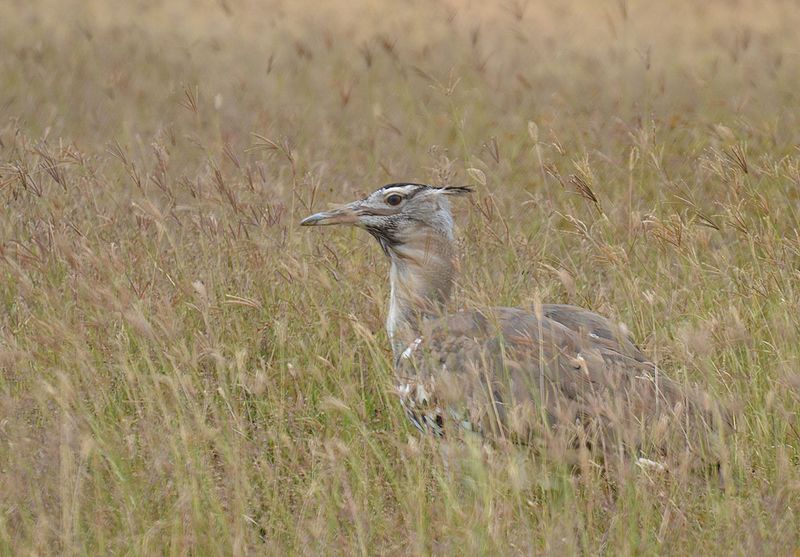
Bustards are large, terrestrial birds that inhabit dry grassland areas and the steppes of the Old World. They range from 40-150 cm in length and belong to the family Otididae.
Bustards have an omnivorous diet consisting of leaves, buds, seeds, fruit as well as small vertebrates and invertebrates.
These birds usually live a solitary life but can be seen gathering around water sources or food during certain times of year such as mating season.
Due to their large size they are vulnerable to predation by foxes or other animals which is why they tend to remain alert at all times.
When in open spaces while relying on camouflage for protection against predators when out in tall vegetation coverings.Scientific classification:
| Kingdom | Animalia |
| Phylum | Chordata |
| Class | Aves |
| Clade | Otidimorphae |
| Order | Otidiformes Wagler, 1830 |
| Family | Otididae Rafinesque, 1815 |
Also Featured In: Common Birds in India, Ukrainian Birds You Should Know
6. White-Throated Kingfisher
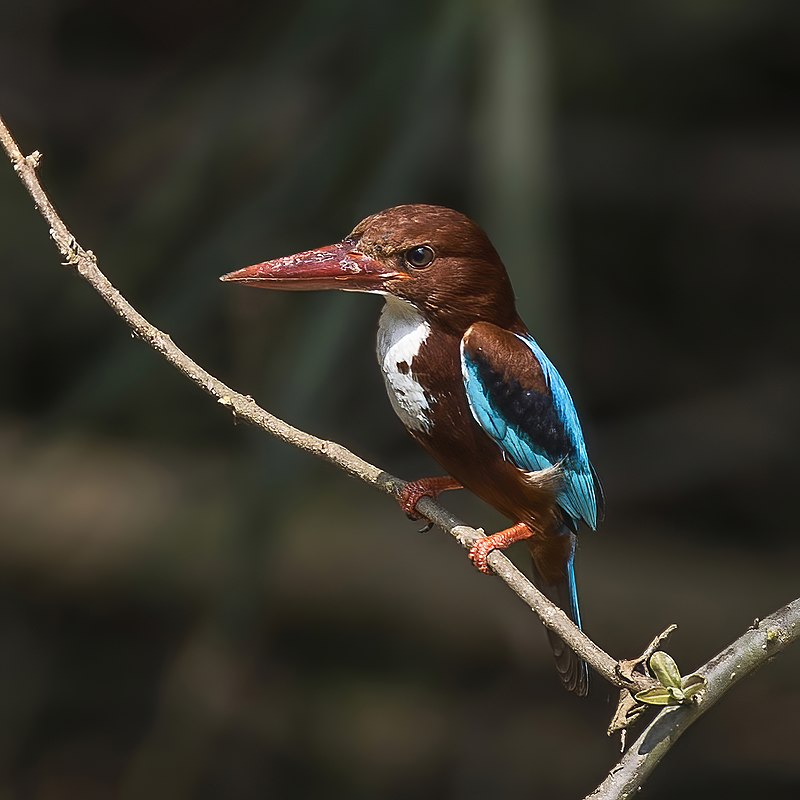
The White-throated Kingfisher is a beautiful bird with bright colors and distinct features. Its back, wings and tail are a deep blue while the head, breast, throat and belly are white.
It has two black stripes across its eyes which contrast nicely against its orange beak and feet.
These birds can often be found perching on tree branches or hovering over creeks in search of food like fish or small insects such as grasshoppers or crickets.
They use their sharp bill to pluck prey from water surfaces then swallow them whole after making adjustments for size by beating it against rocks if necessary.
The White-throated Kingfisher breeds during monsoon season when rainfall increases levels in rivers leading to an abundance of aquatic life that these birds love so much.Scientific classification:
| Kingdom | Animalia |
| Phylum | Chordata |
| Class | Aves |
| Order | Coraciiformes |
| Family | Alcedinidae |
| Subfamily | Halcyoninae |
| Genus | Halcyon |
| Species | H. smyrnensis |
Also Featured In: Common Birds in Kerala, Common Birds of Mumbai
7. Bulbul
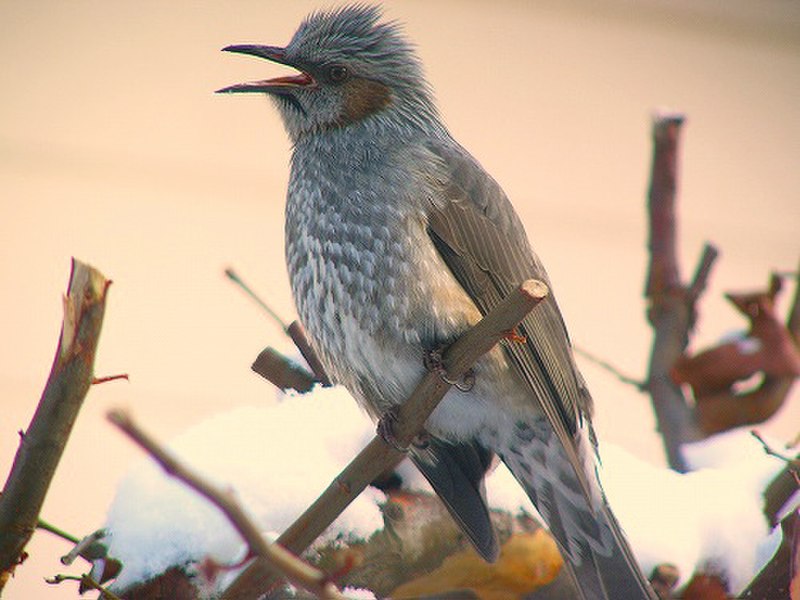
Bulbuls are a medium-sized passerine songbird family native to Africa, the Middle East and tropical Asia up until Japan. They can also be found on some of the Indian Ocean islands.
There are 160 species within 32 genera in this family which includes greenbuls, brownbuls, leafloves and bristlebills.
Bulbul birds have been known for their beautiful singing voices as well as for being very active during mating season when they gather together to create large flocks where potential mates can show off their skills.
The coloration of bulbuls range from dull greys or browns to vibrant yellows with black markings around the head region making them quite attractive creatures indeed.Scientific classification:
| Kingdom | Animalia |
| Phylum | Chordata |
| Class | Aves |
| Order | Passeriformes |
| Parvorder | Sylviida |
| Family | Pycnonotidae Gray, GR, 1840 |
Also Featured In: Armenian Birds You Should Know, Birds You’ll Find in the Marshall Islands
8. Chukar
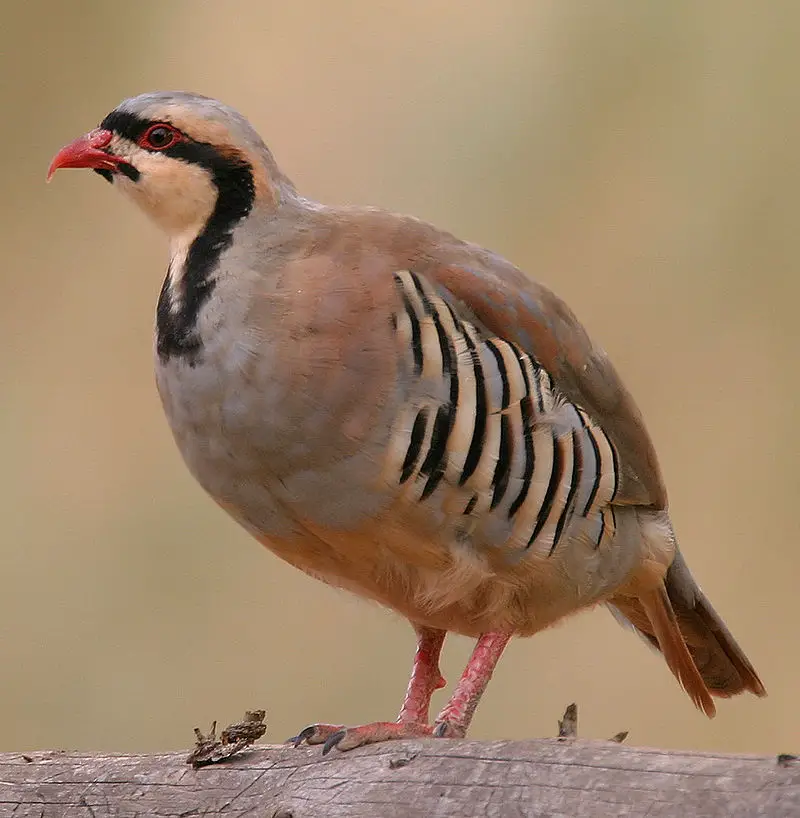
Chukar is a Palearctic upland gamebird belonging to the pheasant family. It has distinctive black and white bars on its flanks, as well as brown upperparts and buff underparts.
Its head is grey with an off-white face, throat and crest which turns chestnut in males during breeding season.
The Chukar typically lives in dry regions like open terrain or semi arid hillsides where it feeds mainly on seeds and invertebrates.
During winter months they tend to inhabit more wooded areas looking for shelter from harsh winds or snow storms.
They are social birds living in groups of up to 20 individuals but will pair off when mating season arrives.Scientific classification:
| Kingdom | Animalia |
| Phylum | Chordata |
| Class | Aves |
| Order | Galliformes |
| Family | Phasianidae |
| Genus | Alectoris |
| Species | A. chukar |
Also Featured In: Native Pakistani Birds, Hawaii Big Island Birds You Should Know
9. Pied Kingfisher
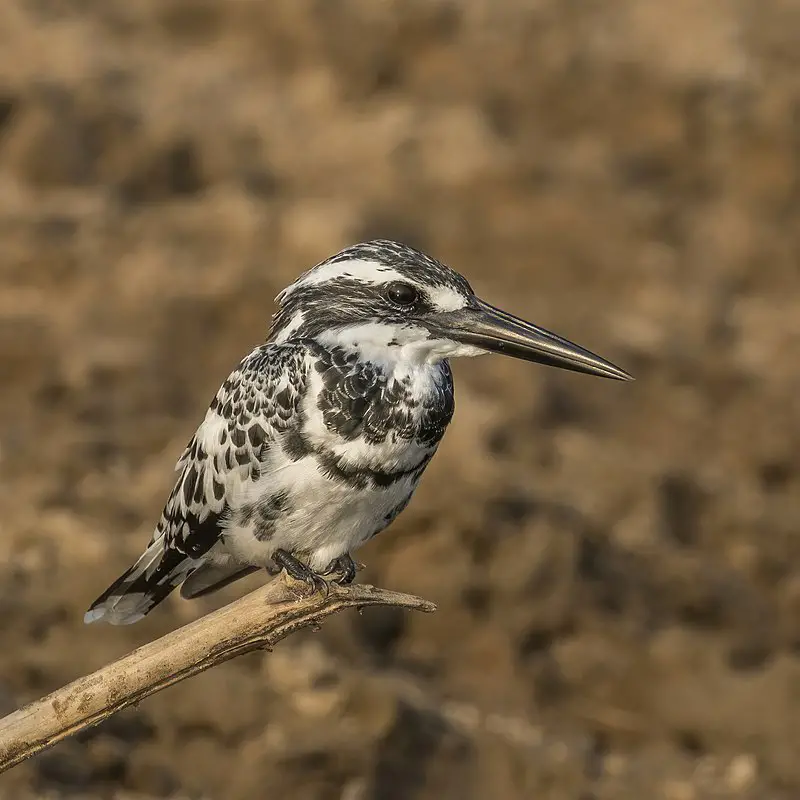
The Pied Kingfisher is a species of water kingfisher found in Africa and Asia. It has black and white plumage, with males sporting a double band across the breast while females have one single band.
This bird makes its presence known by hovering over clear waters before diving for fish – making it easily recognizable.
The diet consists mostly of small aquatic animals such as frogs, crustaceans and insects, but they also consume some plant matter like seeds or fruits occasionally.
The pied kingfisher nests near bodies of water where it can feed off smaller creatures that dwell there; usually in burrows dug into riverbanks or on floating vegetation close to shorelines.
With their distinct colors and behavior patterns these birds make an interesting addition to any wildlife enthusiast’s list.Scientific classification:
| Kingdom | Animalia |
| Phylum | Chordata |
| Class | Aves |
| Order | Coraciiformes |
| Family | Alcedinidae |
| Subfamily | Cerylinae |
| Genus | Ceryle F. Boie, 1828 |
| Species | C. rudis |
Also Featured In: African Birds, East African Birds
10. Northern Storm Petrels
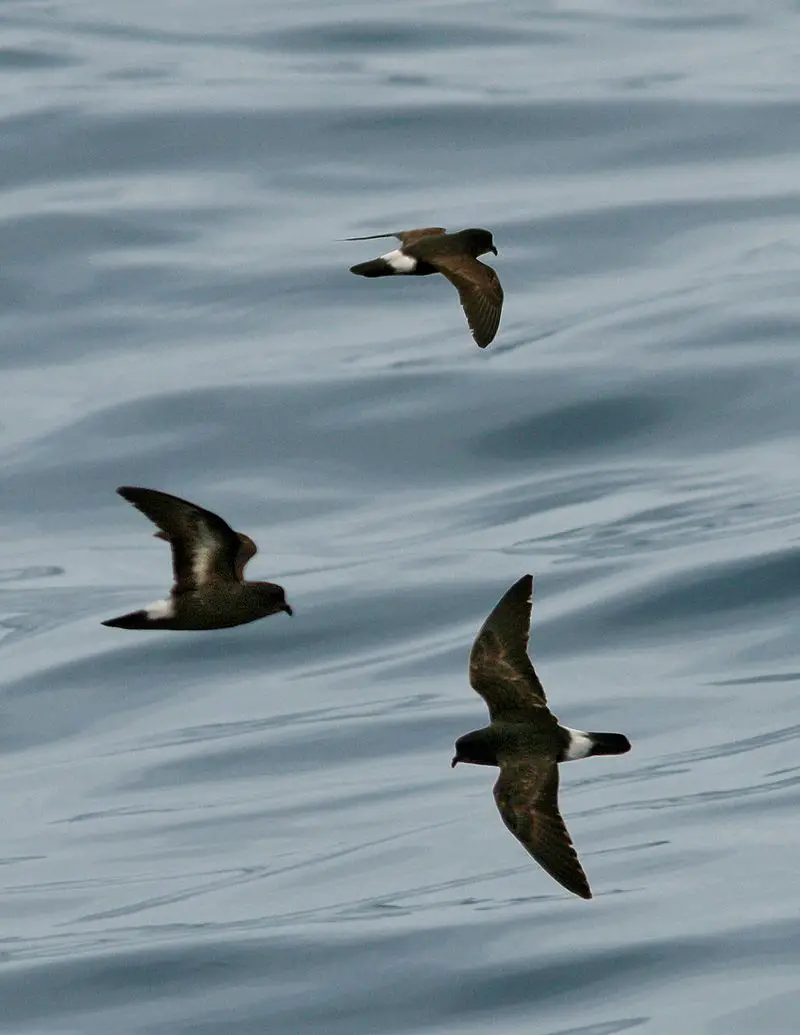
Northern storm petrels are one of the smallest seabirds, inhabiting oceans all over the world.
They have a unique ability to hover over water and pick planktonic crustaceans and small fish from the surface.
Northern storm petrels belong to the genus Hydrobates in family Hydrobatidae, part of Procellariiformes order.
This species was once lumped with austral storm petrel but recent studies show that they weren’t related closely which led them being split into two distinct species now.
These birds can be identified by their dark grey upperparts and wings along with white underparts when seen from afar while feeding on ocean’s surface.Scientific classification:
| Kingdom | Animalia |
| Phylum | Chordata |
| Class | Aves |
| Order | Procellariiformes |
| Family | Hydrobatidae Mathews, 1912 |
| Genus | Hydrobates F. Boie, 1822 |
Also Featured In: Beautiful Brazilian Birds, Birds You’ll Find in the Sea
11. Stone-Curlew

Stone-curlews, also known as dikkops or thick-knees, are a family of birds that have adapted to live in tropical and temperate regions throughout the world.
They can be found in Africa, Asia and Australia with two or more species per region. Despite being classified as waders, most prefer dry arid habitats over moist wetlands.
Stone-curlews typically have long legs which help them navigate through their preferred terrain efficiently; some species even stand at an impressive height when standing on those long legs.
Additionally they feature cryptic plumage which helps them blend into their surroundings while hunting for prey such as insects and small mammals like rodents.
These unique bird’s calls are easily recognizable; it has been said that hearing one is similar to listening to someone whistling ‘Keee Weee’.Scientific classification:
| Kingdom | Animalia |
| Phylum | Chordata |
| Class | Aves |
| Order | Charadriiformes |
| Suborder | Chionidi |
| Family | Burhinidae Mathews, 1912 |
Also Featured In: Birds Found in Hungary, Bulgarian Birds
12. Bee-Eater

Bee-eaters are one of the most beautiful and vibrant birds in existence. They have a slender body, long wings, down turned bills and their signature elongated central tail feathers which make them instantly recognizable from afar.
Their plumage is incredibly colorful with many shades ranging from blues to greens to reds that glisten when they fly through the air.
These stunning creatures can be found all over Africa, Asia, Southern Europe, Australia and New Guinea where they feed mainly on bees but also other insects like flies or wasps as well as small mammals such as lizards or rodents.
Bee-eaters live in colonies near rivers or wetlands so that they may easily hunt for food while staying close together for safety purposes.
Additionally it allows them to better display their impressive courtship dances during mating season.Scientific classification:
| Kingdom | Animalia |
| Phylum | Chordata |
| Class | Aves |
| Order | Coraciiformes |
| Family | Meropidae Rafinesque, 1815 |
Also Featured In: Common Nigerian Birds, Common Serbian Birds
13. Shrike
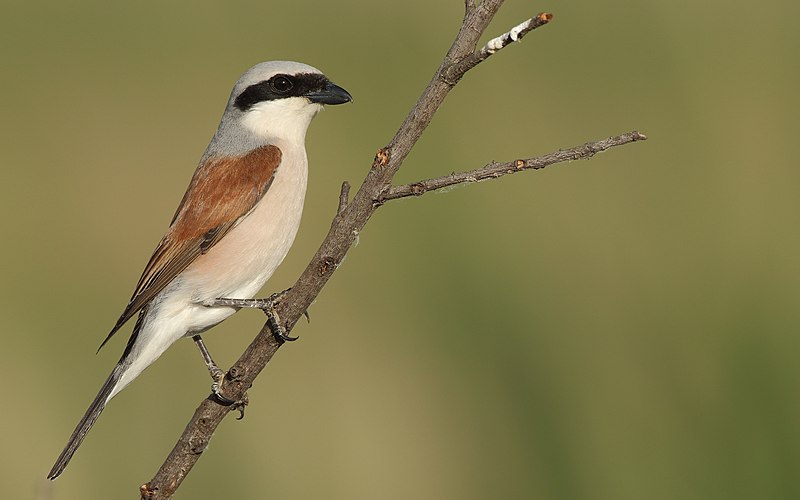
Shrikes are small passerine birds of the family Laniidae, with 34 species in four genera. They get their name from Old English word “scrīc”, which refers to their shriek-like call.
These birds have earned the nickname ‘butcherbirds’ due to their feeding habits; they impale prey on thorns or barbed wire fences for later consumption.
Shrikes also tend to be aggressive predators and hunt a wide range of animals such as insects, small reptiles, rodents and even other smaller bird species.
In terms of physical appearance, these songbirds can vary greatly depending on the specific genus but usually boast a large hooked bill atop an impressive crest along with bright colors like gray, black or brownish hues across its feathers.
It’s clear shrike is quite remarkable creature that has gained notoriety for both hunting prowess and distinctive vocalizations.Scientific classification:
| Kingdom | Animalia |
| Phylum | Chordata |
| Class | Aves |
| Order | Passeriformes |
| Superfamily | Corvoidea |
| Family | Laniidae Rafinesque, 1815 |
Also Featured In: Egyptian Birds, Birds that Live in Croatia
14. Hoopoes
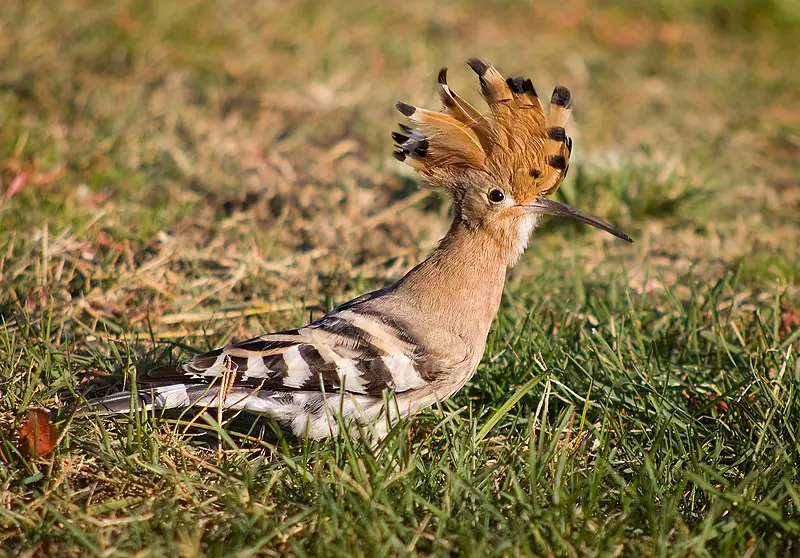
Hoopoes are a fascinating species of bird, found across Africa, Asia and Europe. They have beautiful plumage with unique ‘crowns’ of feathers on their heads.
Three living and one extinct species exist – although for some time they were all classed as the same species: Upupa epops. Some taxonomists still believe this to be true.
These birds are often associated with royalty due to the impressive crown-like crest atop their head, adding an extra element of mystery and exoticism to these creatures.
Hoopoes can also produce loud calls which sound like “hoo-poo” hence why they’ve been given such an apt name.Scientific classification:
| Kingdom | Animalia |
| Phylum | Chordata |
| Class | Aves |
| Order | Bucerotiformes |
| Family | Upupidae Leach, 1820 |
| Genus | Upupa Linnaeus, 1758 |
Also Featured In: Common Cornwall Birds, Common Birds in Tuscany
15. Old World Orioles
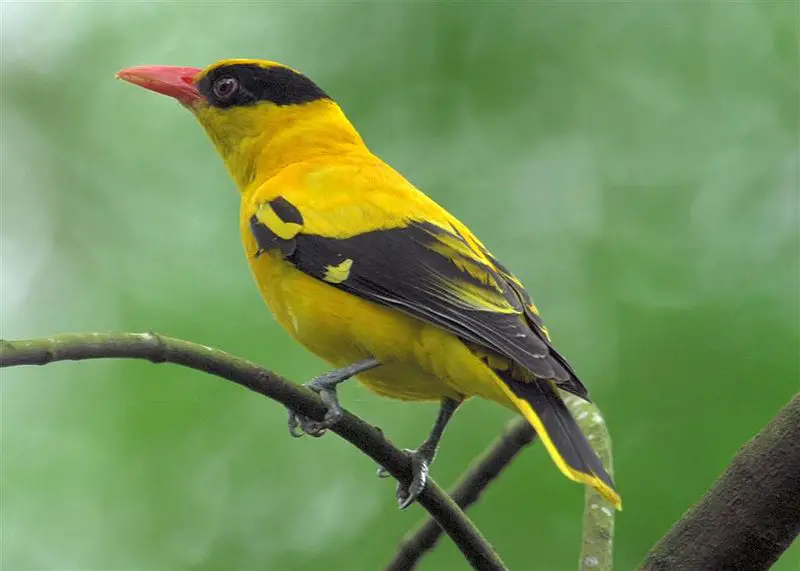
Old World orioles are a family of passerine birds found in the Old World. It comprises four genera: piopios, figbirds, pitohuis and the original genus Oriolus.
The African black-headed species have sometimes been removed from this latter group due to their distinct characteristics as well as other proposed splits for Oriolus.
These colorful birds can be identified by their bright yellow or orange plumage that often features darker markings on wings and head areas, although some species may also display a blue hue or stripes across the body feathers.
They typically feed on insects such as caterpillars and grasshoppers but will supplement with small fruits when available too – making them beneficial additions to gardens.Scientific classification:
| Kingdom | Animalia |
| Phylum | Chordata |
| Class | Aves |
| Order | Passeriformes |
| Superfamily | Orioloidea |
| Family | Oriolidae Vigors, 1825 |
Also Featured In: Birds You’ll Find in Moldova, Most Common Lithuanian Birds
16. Crab-Plover
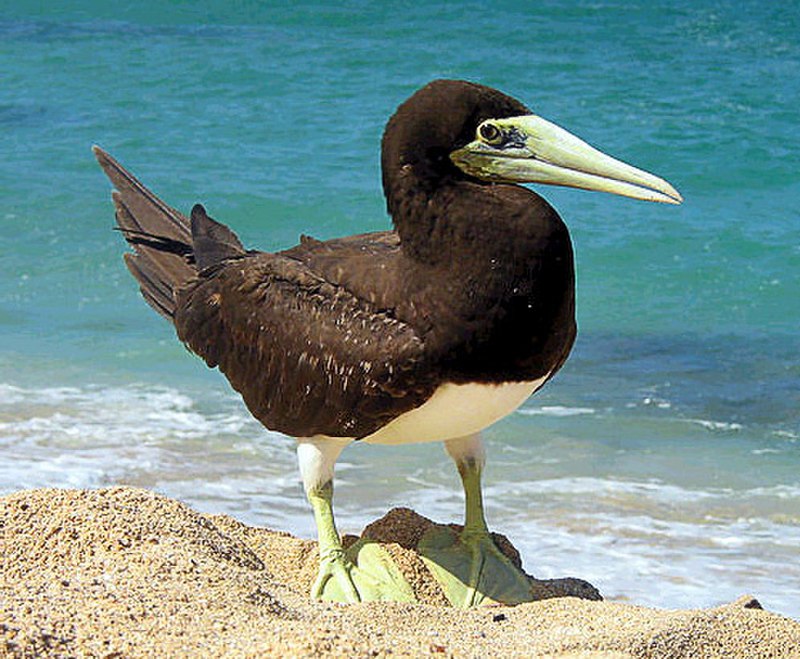
The crab-plover is an exceptional bird which belongs to its own family, Dromadidae. It appears to be closely related to the waders and other Charadriiformes such as auks, gulls and thick-knees.
This species of bird has a unique look; it is white with black markings on its head and wings. Its long bill helps them dig for food in sand or mudflats.
They can also fly up into the air when disturbed by predators or people too close for comfort.
The crab plover spends most of its life near beaches where they feed on crabs, fish eggs and small insects found there.
These birds are highly social during breeding season but solitary at other times throughout their annual cycle making them difficult creatures to spot out in the wild but well worth trying.Scientific classification:
| Kingdom | Animalia |
| Phylum | Chordata |
| Class | Aves |
| Order | Charadriiformes |
| Suborder | Lari |
| Family | Dromadidae GR Gray, 1840 |
| Genus | Dromas Paykull, 1805 |
| Species | D. ardeola |
Also Featured In: Birds of Goa, Birds that Live in Tamil Nadu
17. Eurasian Reed Warbler
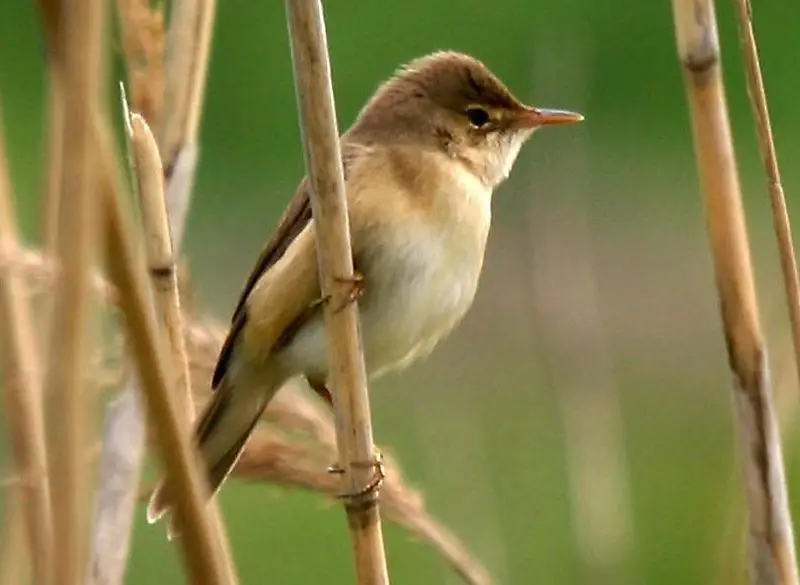
The Eurasian reed warbler (Acrocephalus scirpaceus) is a species of Old World Warbler native to the temperate parts of Europe and Asia.
It breeds in wetlands such as marshes, ponds and rivers with dense vegetation like reeds or tall grasses.
During its wintering season, it migrates southward to sub-Saharan Africa where there are milder conditions.
This small bird has streaked brown plumage on the upperparts and white underparts which makes it difficult for predators to spot among the foliage.
Its diet consists mainly of insects including aphids, caterpillars larvae and moths caught while flying over water or by gleaning from plants growing near water bodies.
The male sings an attractive song consisting of several phrases repeated one after another as part of their courtship display during breeding season in order attract females for mating purposes.Scientific classification:
| Kingdom | Animalia |
| Phylum | Chordata |
| Class | Aves |
| Order | Passeriformes |
| Family | Acrocephalidae |
| Genus | Acrocephalus |
| Species | A. scirpaceus |
Also Featured In: Common Slovakian Birds, Birds You’ll Find in Albania
18. Bearded Reedling
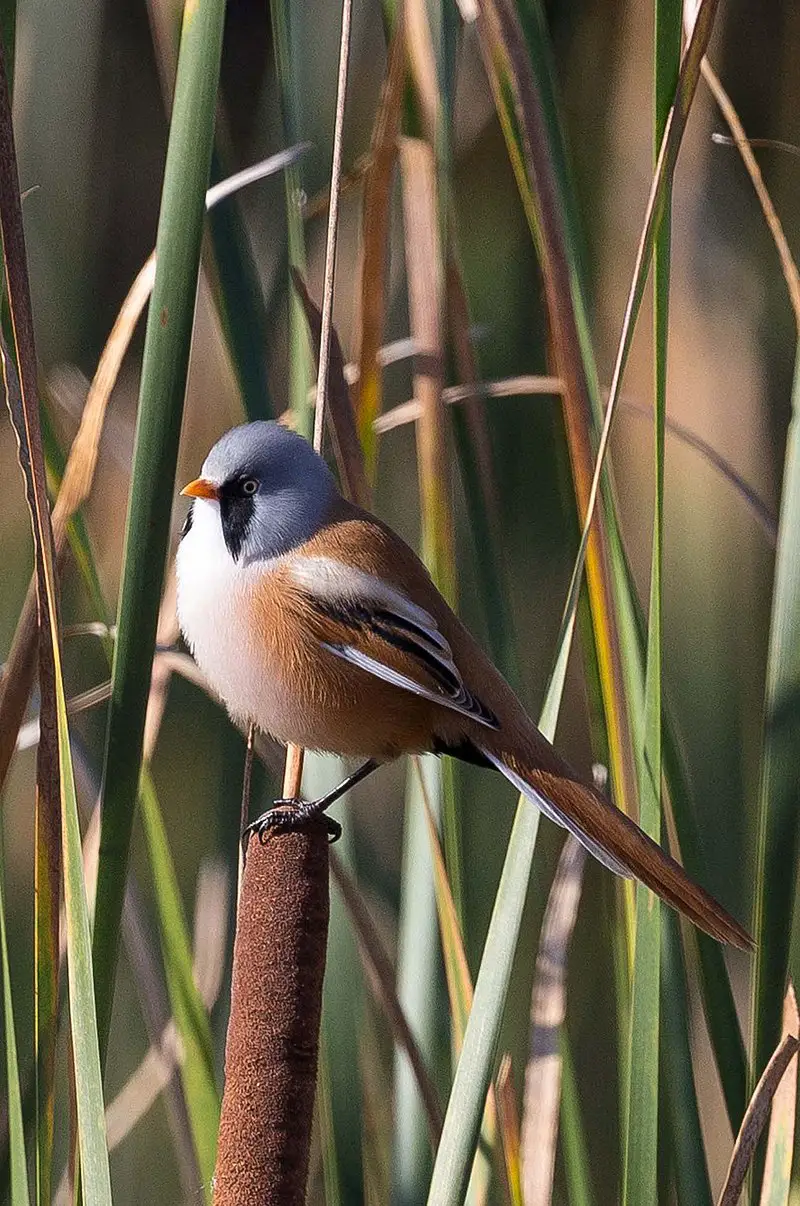
The Bearded Reedling is a small passerine bird found in reed-beds across Europe, Asia and North Africa.
It is easily identified by its distinct black and white plumage with males having yellow faces.
This species belongs to the only family of birds known as Panuridae and was first described by Carl Linnaeus back in 1758.
They feed on insects such as beetles, flies, moths among others but also consume seeds from plants like sedges or rushes during winter months when food availability decreases significantly.
These birds are territorial meaning that they have their own area where they live which can vary from 8 to 12 hectares depending on the seasonality of insect abundance within these areas making them an important part for maintaining healthy ecosystems in wetlands around their range.Scientific classification:
| Kingdom | Animalia |
| Phylum | Chordata |
| Class | Aves |
| Order | Passeriformes |
| Family | Panuridae Des Murs, 1860 |
| Genus | Panurus Koch, 1816 |
| Species | P. biarmicus |
Also Featured In: Birds of United Kingdom, Birds Commonly Found in Slovenia
19. Greater Flamingo
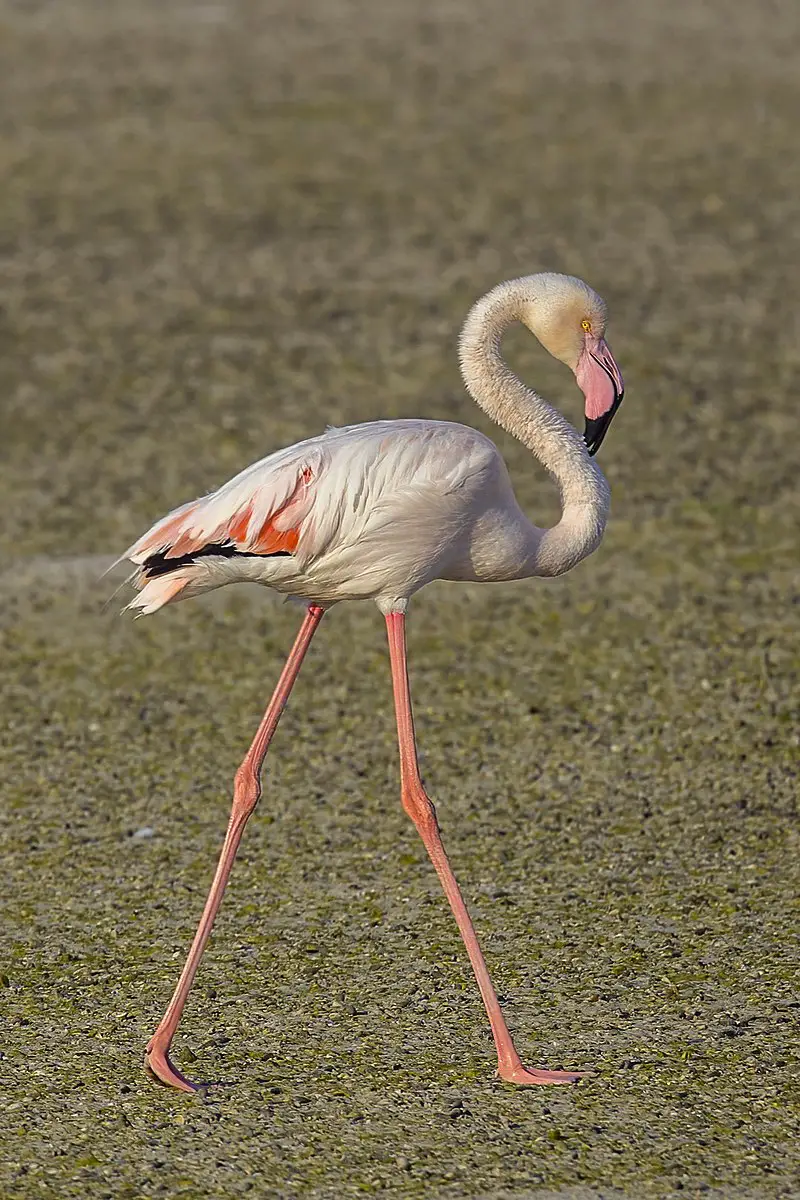
The Greater Flamingo is an impressive bird belonging to the Phoenicopteridae family. It’s one of the most widespread and largest species among flamingos with a range covering Africa, India, Middle East and southern parts of Europe.
The bird was described by Peter Simon Pallas in 1811 but it wasn’t until recently that it was distinguished from American Flamingo (Phoenicopterus ruber), due to differences in coloration between them.
This large-bodied wading bird stands tall at 1m on average and has bright pink plumage adorning its long neck and legs which gives way to black wing tips when flying.
Its diet mainly consists of algae, crustaceans as well as small aquatic animals like mollusks found while they feed along shallow lakes or lagoons where they live their social lives surrounded by others just like them.Scientific classification:
| Kingdom | Animalia |
| Phylum | Chordata |
| Class | Aves |
| Order | Phoenicopteriformes |
| Family | Phoenicopteridae |
| Genus | Phoenicopterus |
| Species | P. roseus |
Also Featured In: Most common Birds in France, Gujarati Birds
20. Procellariidae
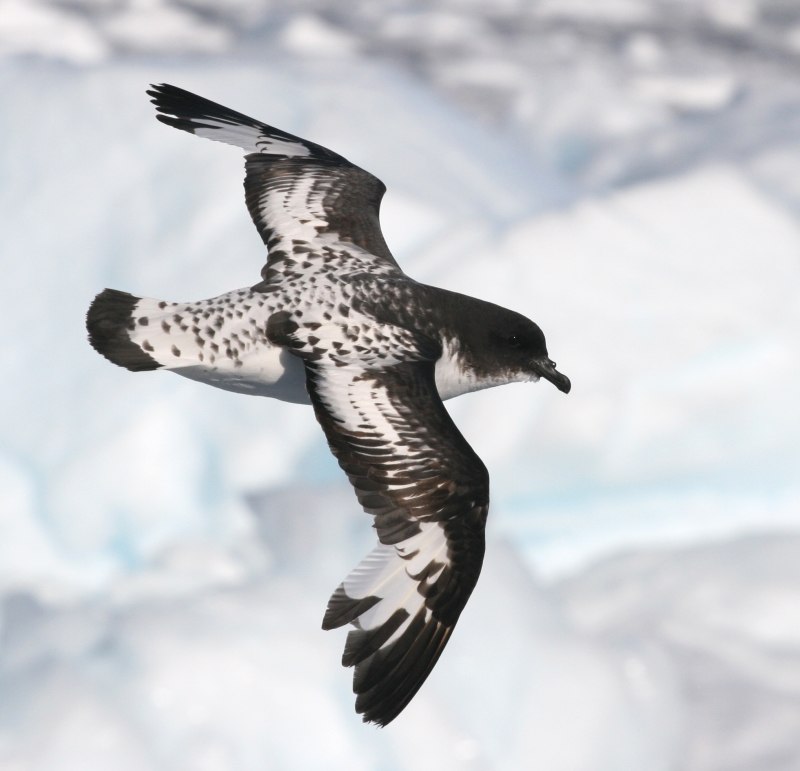
Procellariidae is a diverse family of seabirds belonging to the bird order Procellariiformes.
These birds are commonly referred to as tubenoses and include fulmarine petrels, gadfly petrels, diving petrels, prions, and shearwaters.
They range in size from the small storm-petrel which measures around 18cm long to the giant albatross which can reach up to 3 meters in length.
Generally found near oceans or coasts where they feed on fish as well as squid and other marine life depending on species.
Many procellariids will also nest inland during breeding season before returning back out at sea for most of their lives.
Their wings have specially adapted feathers that give them incredible gliding abilities allowing them literally fly with minimal effort over vast distances across oceanic regionsScientific classification:
| Kingdom | Animalia |
| Phylum | Chordata |
| Class | Aves |
| Order | Procellariiformes |
| Family | Procellariidae Leach, 1820 |
Also Featured In: Birds of Latvia, Common Republic of Nauru Birds
21. Falcons And Caracaras
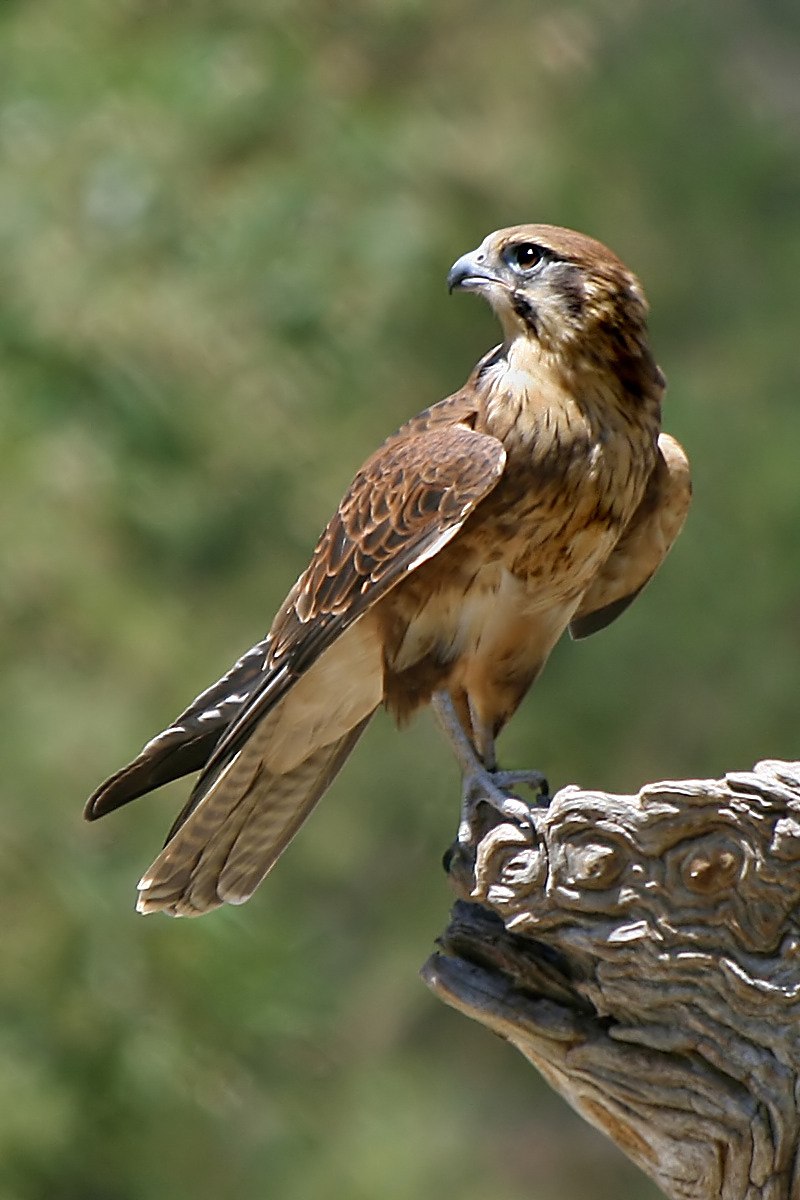
Falcons and caracaras are birds of prey that belong to the family Falconidae. They have impressive sharp talons, hooked beaks and keen eyesight which makes them excellent hunters.
Falcons can reach speeds up to 200 mph when diving for their prey while caracaras use a combination of running and flying to hunt small mammals such as rabbits or rats.
Both falcons and caracaras live in various areas around the world from grasslands, deserts, forests, wetlands or even urban areas where they nest on cliffs or tall buildings.
The diet mainly consists insects but also includes larger animals like reptiles or other birds which they catch by surprise with fast dives out of the sky.Scientific classification:
| Kingdom | Animalia |
| Phylum | Chordata |
| Class | Aves |
| Order | Falconiformes |
| Family | Falconidae Leach, 1820 |
Also Featured In: Native South Korean Birds, Most Common Taiwan Birds
22. Glossy Ibis
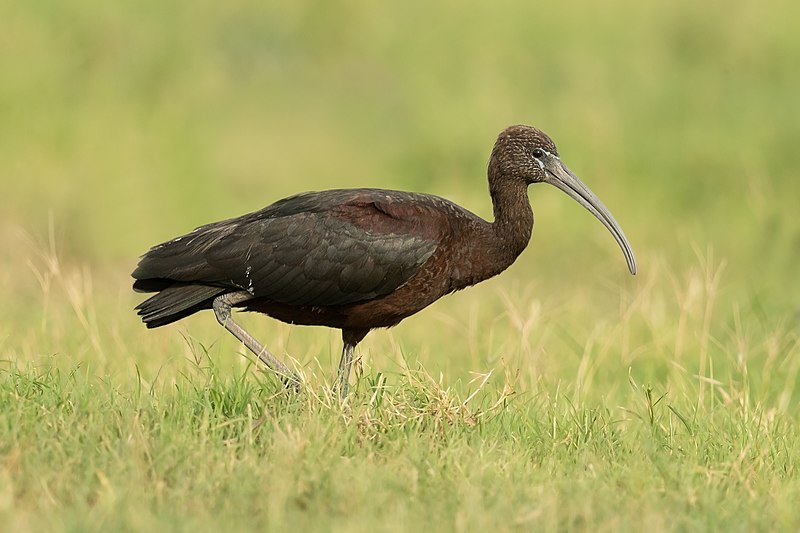
The Glossy Ibis is a water bird that belongs to the family Threskiornithidae. It has an unique bill in the shape of a sickle, which gave it its scientific name – Plegadis falcinellus.
It can be found widely across Europe, Asia and Africa, with scattered nesting sites in warm regions.
Its feathers are black-brown on top and chestnut brown from below; their wings have glossy greenish-purple sheen when seen from afar.
They mainly feed on small insects like grasshoppers, spiders or earthworms as well as crustaceans or amphibians caught while wading through shallow waters.
During breeding season they also consume plant material such as rice grains or corn kernels provided by humans near habitat areas where they nest.Scientific classification:
| Kingdom | Animalia |
| Phylum | Chordata |
| Class | Aves |
| Order | Pelecaniformes |
| Family | Threskiornithidae |
| Genus | Plegadis |
| Species | P. falcinellus |
Also Featured In: Uganda Birds Species, Water Birds Live around Us
23. Barn-Owls
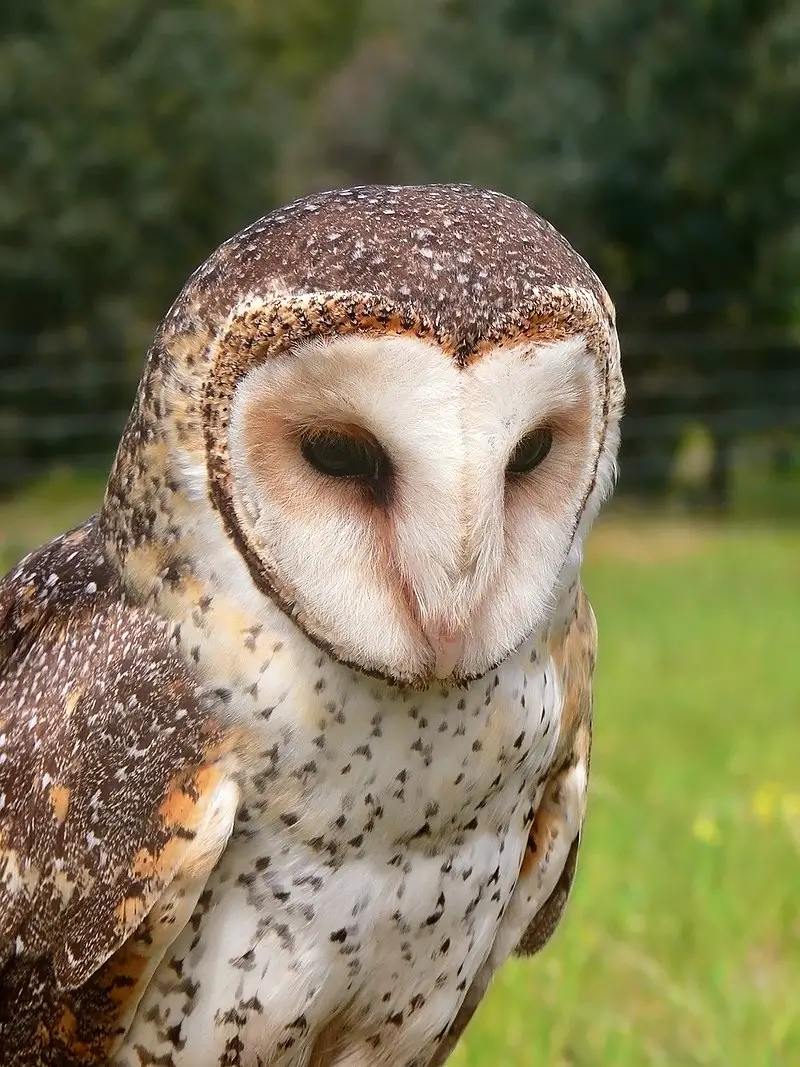
Barn-owls belong to the family Tytonidae and are distinguishable from other owls by their large heads, heart-shaped faces and long legs with powerful talons.
They inhabit a wide range of habitats, including grasslands, deserts, forests and wetlands.
These nocturnal birds hunt mainly small mammals like voles but also consume insects such as beetles or moths when available.
Barn-owls have excellent vision at night which helps them locate prey in even the darkest of conditions.
Their unique call is often heard during dusk or dawn which has earned them nicknames such as “screech owl” or “ghost owl”.
As they help control rodent populations they can be beneficial for farmers who may find barn-owls nesting on their property.Scientific classification:
| Kingdom | Animalia |
| Phylum | Chordata |
| Class | Aves |
| Order | Strigiformes |
| Family | Tytonidae Ridgway, 1914 |
Also Featured In: Night Cyprus Birds,
24. Streaked Scrub Warbler
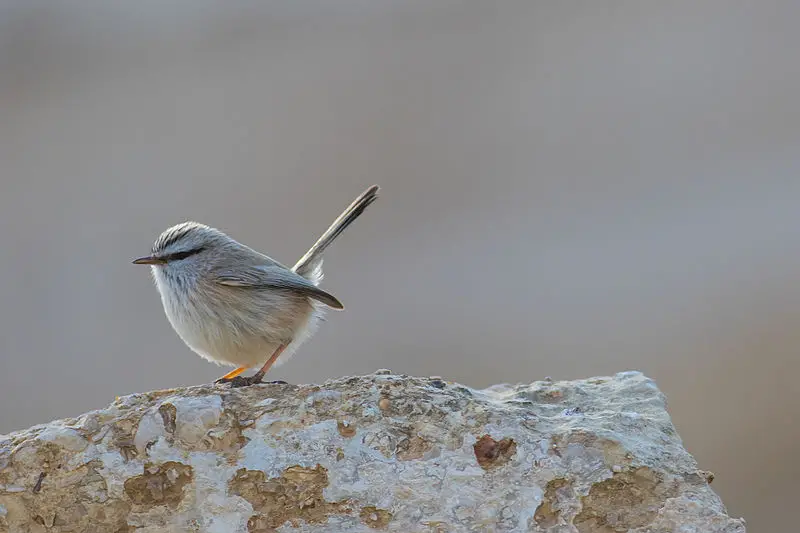
The Streaked Scrub Warbler is a small passerine bird, found in northern Africa and southwestern Asia.
It frequents scrubby areas, ravines and gorges near deserts, remaining mainly resident but with possible local movements outside the breeding season.
This species has grayish-brown upperparts streaked with black lines or bars forming an intricate pattern across its back; whitish underparts are also marked by dark streaks on the breast.
Its diet consists of insects which it catches from low vegetation while making short flights over them to capture prey as well as gleaned items from branches or foliage surface foraged on foot.
The Streak Scrub Warbler is quite vocal throughout the year giving various trills and whistles that sound like “seet”.Scientific classification:
| Kingdom | Animalia |
| Phylum | Chordata |
| Class | Aves |
| Order | Passeriformes |
| Family | Scotocercidae Fregin, Haase, Olsson, & Alström, 2012 |
| Genus | Scotocerca Sundevall, 1872 |
| Species | S. inquieta |
Also Featured In: Native Birds of Afghanistan,
25. Stock Dove
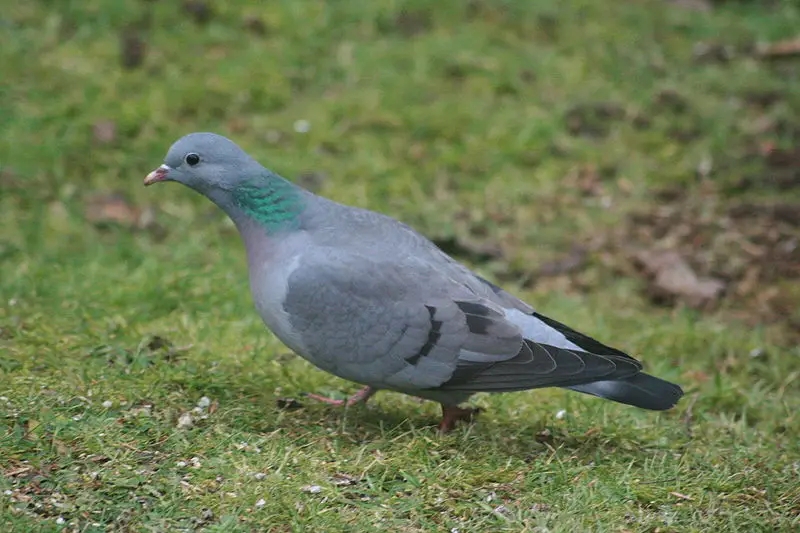
The Stock Dove is a species of bird in the Columbidae family, commonly found across the western Palearctic.
It was first documented by Swedish Naturalist Carl Linnaeus as part of his Systema Naturae publication back in 1758 and given its scientific name – Columba oenas.
Its body has an overall grey-blue colouration with darker wings, while they sport a small white patch on their neck and dark spots along their chest area.
They mainly feed on seeds but can also be seen eating insects or other invertebrates during summertime.
These birds are often heard before being spotted due to their loud cooing sound which echoes through woodlands near lakes and rivers where they typically nest; either low down in trees or sometimes even inside caves.Scientific classification:
| Kingdom | Animalia |
| Phylum | Chordata |
| Class | Aves |
| Order | Columbiformes |
| Family | Columbidae |
| Genus | Columba |
| Species | C. oenas |
Also Featured In: Birds of Poland, Common Birds in London
26. Eurasian Penduline Tit
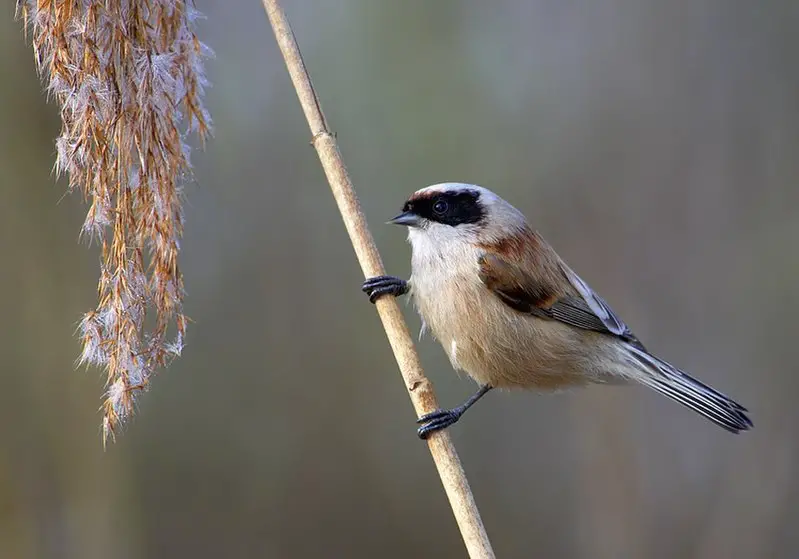
The Eurasian penduline tit is a passerine bird of the genus Remiz which can be found widely across the western Palearctic.
It migrates to more northern parts in summer, while staying resident in its southern range during winter months.
This species experienced an expansion of its breeding grounds throughout Western Europe between 1980s and 1990s, thus increasing its population significantly.
The Penduline Tit has various striking features like bright yellow underparts with black streaks on sides.
Greyish-brown upper part with white underside and pale eye line along head sides as well as distinctive tail nest made from fibers and mosses hanging from trees or shrubs like a pendulum hence their name ‘Penduline’.
These birds feed mainly on insects but also eat some seeds especially sunflower seeds making them popular garden visitors for many people.Scientific classification:
| Kingdom | Animalia |
| Phylum | Chordata |
| Class | Aves |
| Order | Passeriformes |
| Family | Remizidae |
| Genus | Remiz |
| Species | R. pendulinus |
Also Featured In: Birds of Morocco, Birds that Live in Montenegro
27. Sylviid Warblers
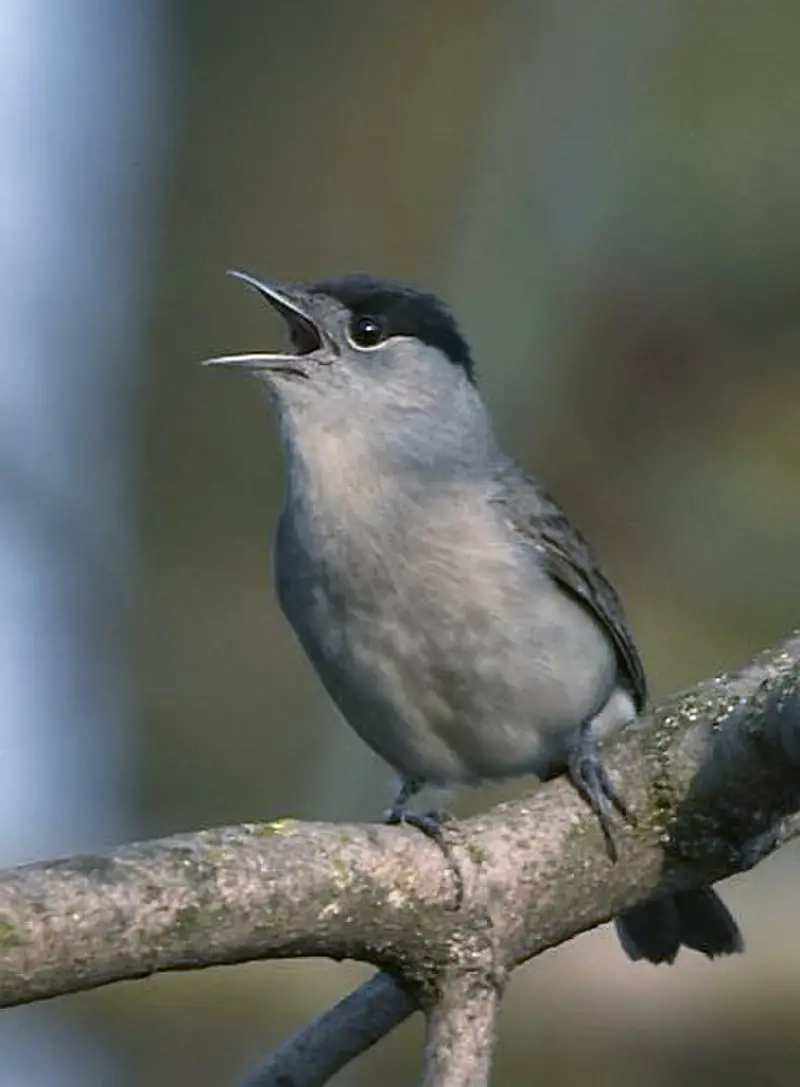
The Sylviid warblers are a family of passerine birds found in Eurasia and Africa. They include the typical warblers as well as babblers that were formerly part of the Old World babbler family.
These birds have slender bodies, pointed wings, long tails and strong legs adapted for ground-dwelling habits like running or hopping along branches.
The male often has bright colors while females are usually duller in coloration with more muted plumage patterns than males.
Some species also show sexual dimorphism where one sex may be larger or smaller than its counterpart; for instance some species may have longer tail feathers on the female side compared to their male counterparts.
Many members of this group feed on insects but some specialize on seeds, fruits, nectar or even frogs.Scientific classification:
| Kingdom | Animalia |
| Phylum | Chordata |
| Class | Aves |
| Order | Passeriformes |
| Superfamily | Sylvioidea |
| Family | Sylviidae Leach, 1820 |
Also Featured In: Common Estonian Birds, Birds that Live in Greenland
28. Desert Wheatear
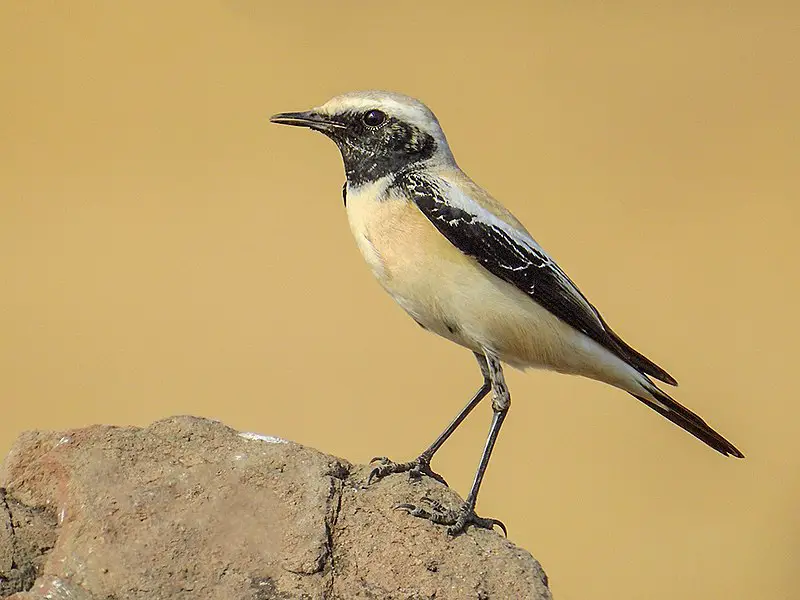
The Desert Wheatear is a small passerine bird that typically inhabits desert and semi-desert areas. It measures 14.5 to 15 cm in length, making it slightly larger than most thrushes but smaller than many Old World flycatchers.
The upper parts of this species are greyish-brown with black streaking, while the underparts are whitish or buffy white with some cinnamon on its sides and flanks.
Its tail has two prominent white bars at the tip which contrast starkly against its otherwise dark plumage.
During breeding season males will often display their conspicuous orange throat patch as part of courtship behaviour towards females of the species.
However, outside of mating season both sexes share identical plumages without any discernible differences between them apart from size variations common among all birds.
This insectivorous species mostly feeds on flying insects such as moths, beetles and bees that they catch midair during short sallies out into open spaces near coverts where they can hide if threatened by predators like other birds or mammals roaming their habitat range throughout Eurasia including rare vagrants to western Europe.Scientific classification:
| Kingdom | Animalia |
| Phylum | Chordata |
| Class | Aves |
| Order | Passeriformes |
| Family | Muscicapidae |
| Genus | Oenanthe |
| Species | O. deserti |
29. Eastern Imperial Eagle
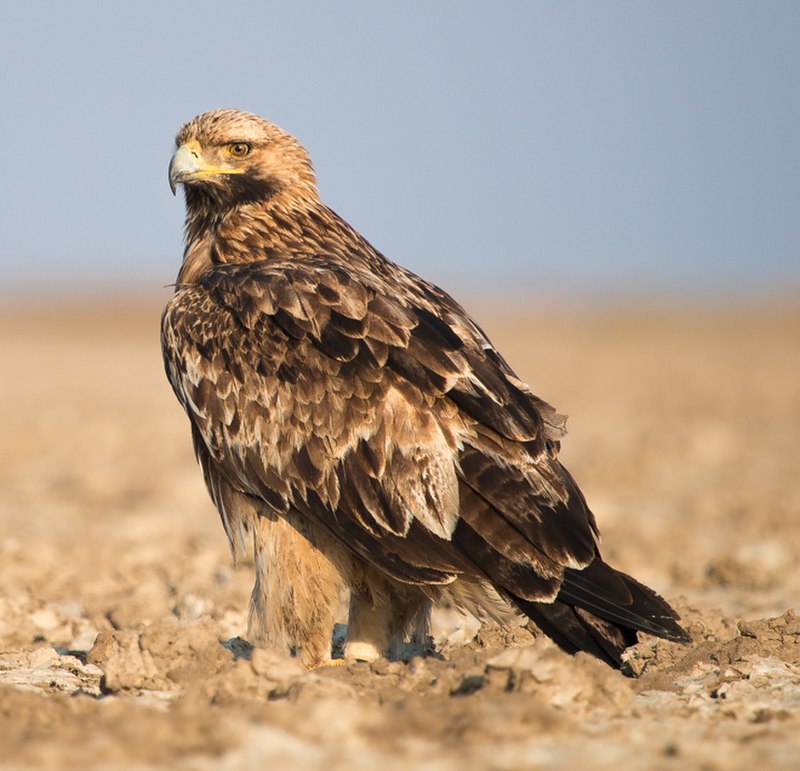
The Eastern Imperial Eagle is a majestic bird of prey, with striking features and sharp eyesight.
It breeds in southeastern Europe and throughout West and Central Asia, before migrating south to winter in Africa, the Middle East or South/East Asia.
This eagle belongs to the Accipitridae family – known for their well-feathered legs – allowing them great agility when hunting their prey which includes rabbits, hares and small mammals among other birds.
They have brown wings bordered by white feathers which gives it an elegant appearance that stands out from its environment.
In recent years there has been some concern about declining numbers due to loss of habitat or illegal poaching; however conservation efforts are underway to ensure this beautiful species continues into future generations.Scientific classification:
| Kingdom | Animalia |
| Phylum | Chordata |
| Class | Aves |
| Order | Accipitriformes |
| Family | Accipitridae |
| Genus | Aquila |
| Species | A. heliaca |
Also Featured In: Common Birds in Saudi Arabian, Imperial Birds You Should Know
30. Syrian Serin
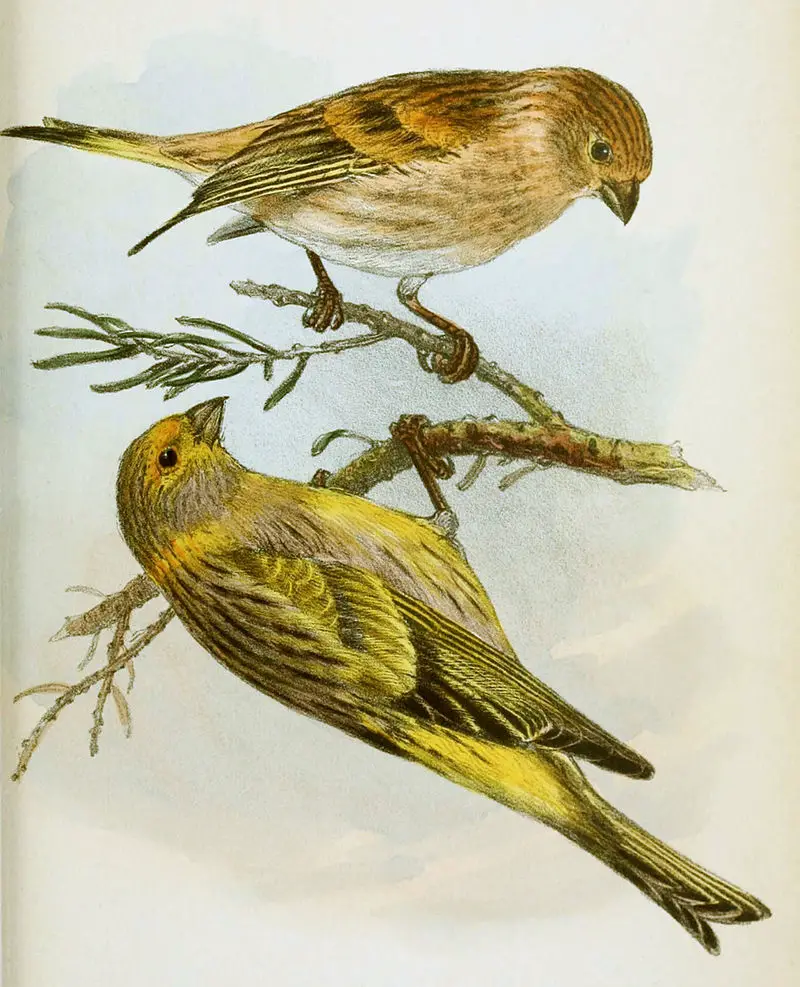
The Syrian serin is a beautiful finch bird with bright yellow and pale grey feathers, large eyes surrounded by a bright yellow ring, and a grey beak. Its legs are pinkish-grey in colour.
It has an endearing trilling call that carries far on the air along with occasional chirps or twitters.
This small passerine breeds mainly in Syria and continues to thrive there due to its varied diet of seeds from weeds as well as fruits found within their habitat range.
The Syrian Serin can often be seen flitting about bushes or trees where it builds nests made from grasses for nesting purposes during springtime mating season when male birds display colourful plumage for attracting mates.Scientific classification:
| Kingdom | Animalia |
| Phylum | Chordata |
| Class | Aves |
| Order | Passeriformes |
| Family | Fringillidae |
| Subfamily | Carduelinae |
| Genus | Serinus |
| Species | S. syriacus |
31. Isabelline Wheatear
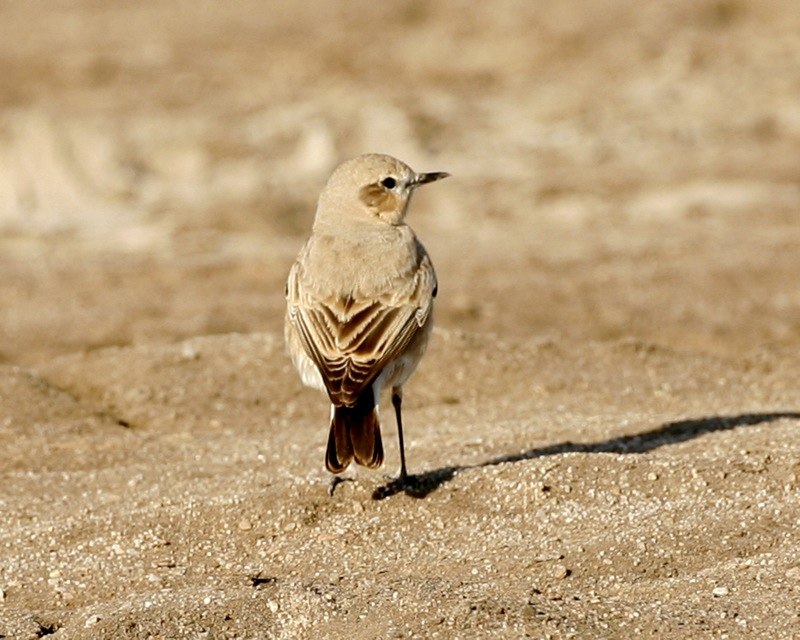
The Isabelline Wheatear is a small passerine bird belonging to the Muscicapidae family. It can be found in steppes and open countryside, breeding from southern Russia through Central Asia all the way down to northern Pakistan.
During wintertime it migrates southwards for warmer climates. Its diet mainly consists of insects which makes this species an insectivorous one.
Its usual hunting ground is on low vegetation or on bare soil where it searches for food with its agile movements and sharp bill.
The males are distinguished by their grey upperparts, light underside with buff markings around wings and tail as well as their white brow stripe that gives them their name: “Isabellina”.Scientific classification:
| Kingdom | Animalia |
| Phylum | Chordata |
| Class | Aves |
| Order | Passeriformes |
| Family | Muscicapidae |
| Genus | Oenanthe |
| Species | O. isabellina |
32. Mistle Thrush
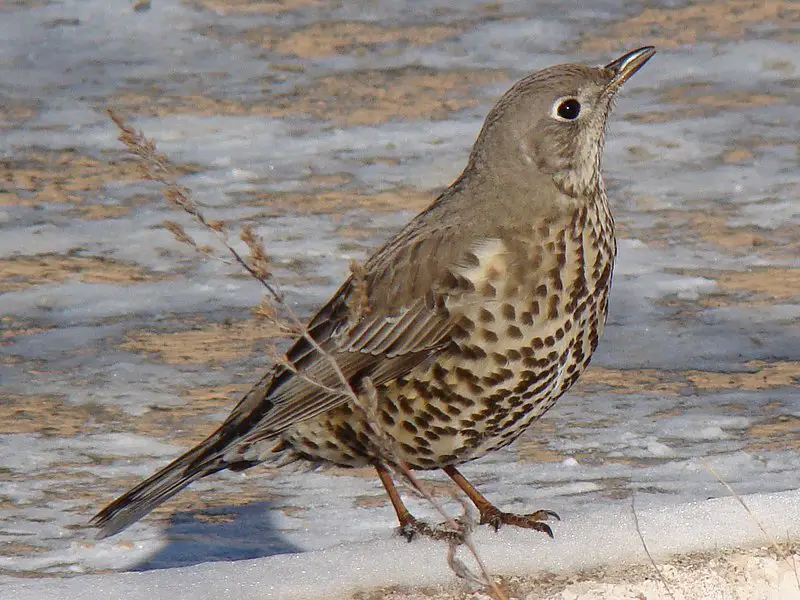
The Mistle Thrush is a beautiful bird that can be found across much of Europe, temperate Asia and North Africa. It has a pale grey-brown upper body, with black spots on its off-white underparts.
Its chin and throat are also whitish in colour. During the winter months northern and eastern populations migrate south but most other birds stay put year round forming small flocks along the way.
These thrushes have strong legs which they use to dig through soil looking for food such as slugs, snails or insects – although they will happily take advantage of fruit when it’s available.
They’re known for their melodious songs that often fill gardens during summertime – making them popular among many gardeners.Scientific classification:
| Kingdom | Animalia |
| Phylum | Chordata |
| Class | Aves |
| Order | Passeriformes |
| Family | Turdidae |
| Genus | Turdus |
| Species | T. viscivorus |
Also Featured In: Birds of Czech Republic,
33. Acrocephalidae
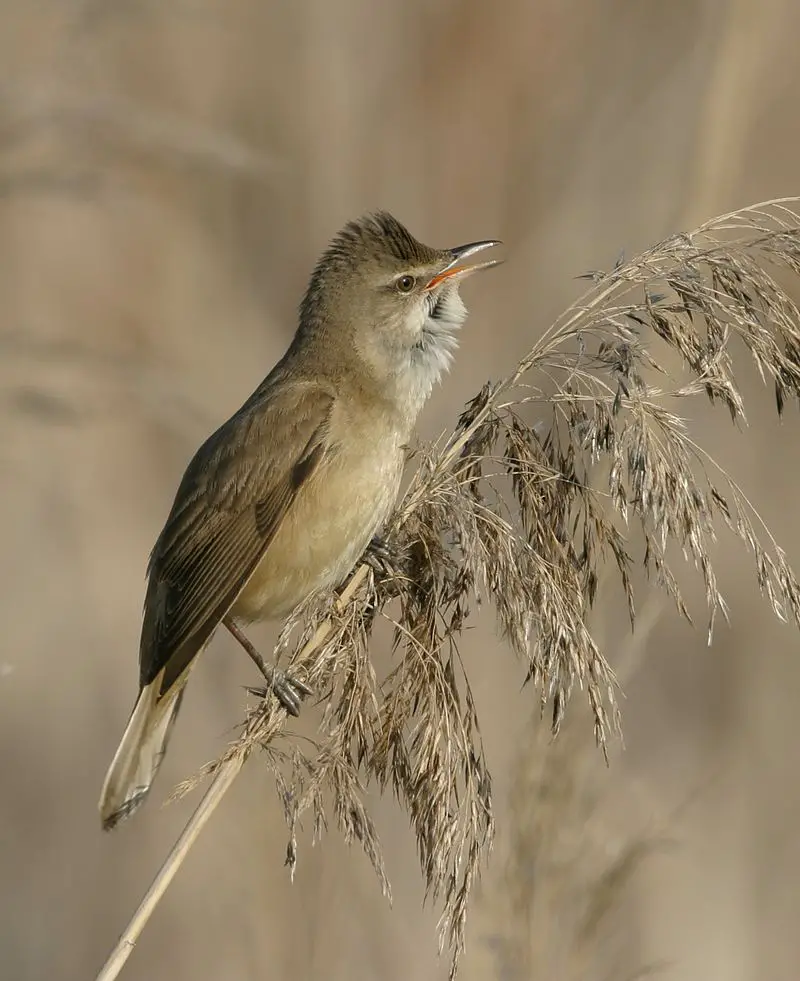
The Acrocephalidae, commonly known as reed warblers, marsh- and tree-warblers or acrocephalid warblers are a family of passerine birds belonging to the superfamily Sylvioidea.
These birds typically have an olivaceous brown top with yellowish to beige underside. They can mostly be spotted in open woodlands, reed beds or tall grasses.
This family comprises about 130 species spread across Eurasia and Africa which includes some vagrant species too.
Most of these bird families feed on insects like spiders, beetles etc., while others also consume small fruits such as berries.
They make nests close to ground level by weaving twigs together using their saliva for binding them making it waterproof enough so that eggs stay safe from rainwater during breeding season.Scientific classification:
| Kingdom | Animalia |
| Phylum | Chordata |
| Class | Aves |
| Order | Passeriformes |
| Superfamily | Sylvioidea |
| Family | Acrocephalidae Salvin, 1882 |
Also Featured In: Birds of United Arab Emirates,
34. Nightjars
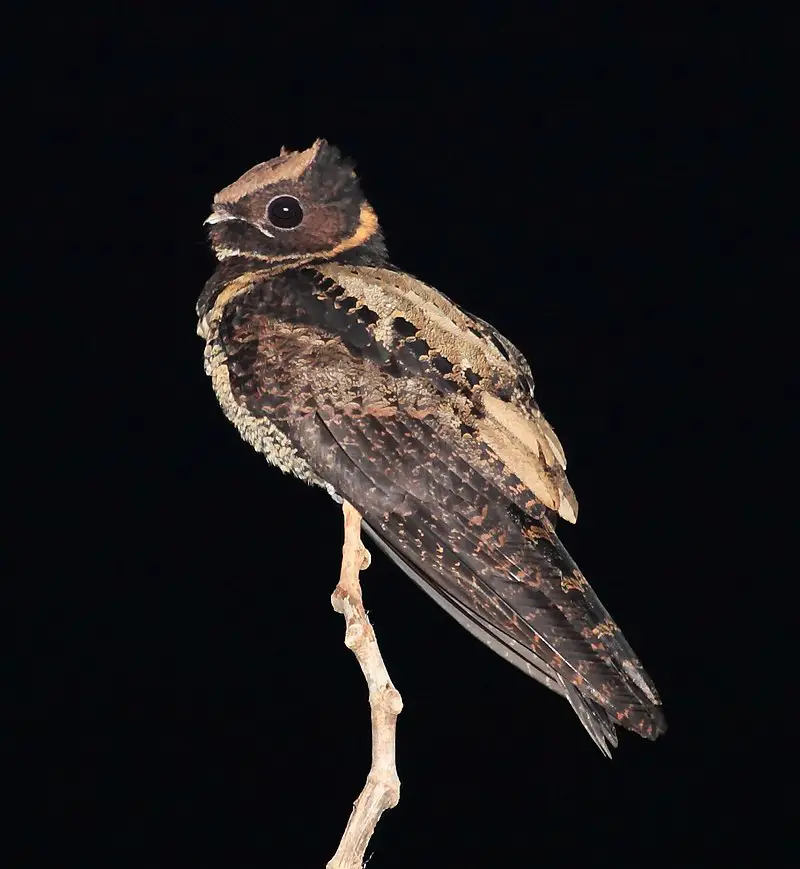
Nightjars are fascinating nocturnal or crepuscular birds belonging to the Caprimulgidae family. These medium-sized birds have long wings, short legs and very small bills.
They can be found across many parts of the world in forests, grasslands and scrubland habitats.
Nightjars feed on insects such as moths, beetles, crickets and cicadas which they catch with their sharp eyesight during night time flights over open fields when hunting for food.
Their scientific name ‘Caprimulgidae’ is derived from an old folktale that claims these birds suck milk from goats.
In reality though, they are harmless creatures who pose no threat to livestock whatsoever.
Nightjars make a variety of different calls ranging from whistles to chirps all throughout the night – adding further mystery to this amazing species.Scientific classification:
| Kingdom | Animalia |
| Phylum | Chordata |
| Class | Aves |
| Clade | Strisores |
| Order | Caprimulgiformes Ridgway, 1881 |
| Family | Caprimulgidae Vigors, 1825 |
Also Featured In: Birds of Israel, Birds that Live in Guyana
35. Lanner Falcon
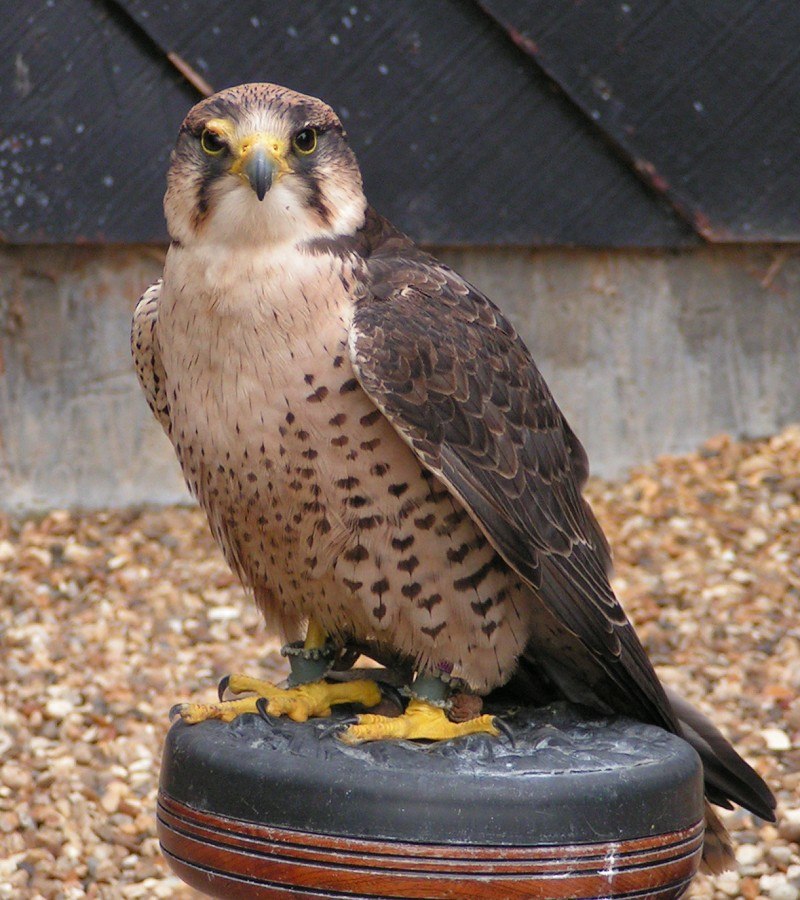
The Lanner falcon is a medium-sized bird of prey found throughout Africa, southeast Europe and parts of Asia. It has a wingspan up to 42 inches and is typically slate gray with chestnut accents on its upper body.
This majestic creature prefers open habitat such as grasslands or savannas providing them ample hunting opportunities for small birds, bats and even large insects.
The species was first described by Dutch zoologist Coenraad Jacob Temminck in 1825 under the scientific name Falco biarmicus.
Thanks to conservation efforts this magnificent raptor remains abundant in some regions today though it does face threats from loss of habitat due to human development activities as well as illegal trapping for use within the sport hunting industry.Scientific classification:
| Kingdom | Animalia |
| Phylum | Chordata |
| Class | Aves |
| Order | Falconiformes |
| Family | Falconidae |
| Genus | Falco |
| Subgenus | Hierofalco |
| Species | F. biarmicus |
Also Featured In: Native Birds Of Libya, European Birds
36. Cisticolidae
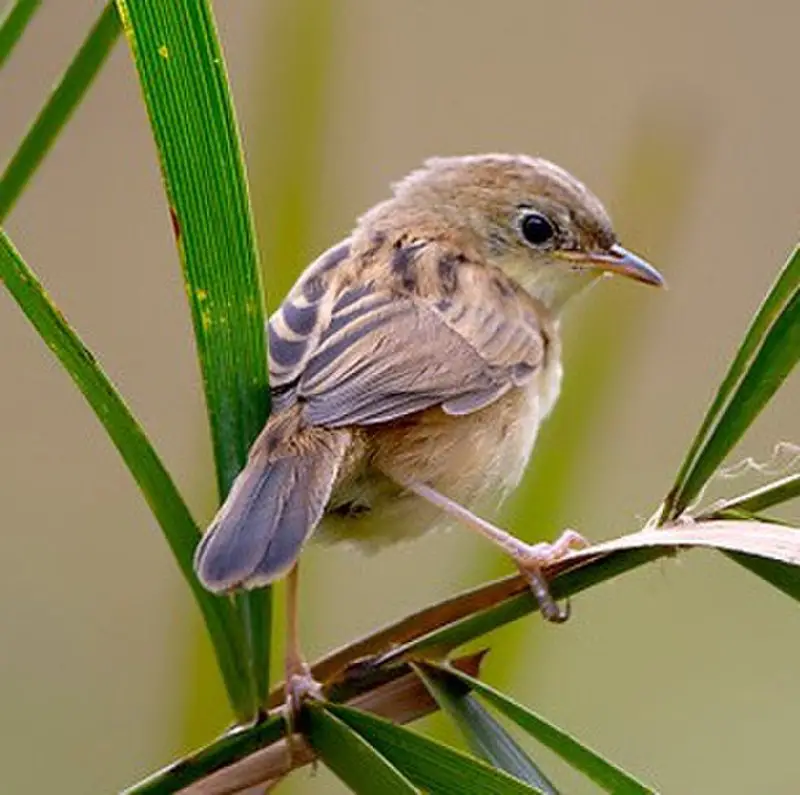
Cisticolidae is a family of warblers found mainly in warmer regions of the Old World. There are about 160 species all together, mostly seen across Africa but also in other parts like tropical Asia and Australasia.
One notable example from this family is the zitt bird which makes its home across these areas.
These small passerine birds have drab colors on their bodies with darker wings and tails for camouflage when they fly or perch among foliage.
They can be distinguished by their loud chirps that echo through forests and grasslands as well as distinctive songs used to attract mates during mating seasons.
Despite being quite common, Cisticolidae remain elusive due to their excellent ability to hide away within vegetation making them difficult to observe closely in nature.Scientific classification:
| Kingdom | Animalia |
| Phylum | Chordata |
| Class | Aves |
| Order | Passeriformes |
| Superfamily | Sylvioidea |
| Family | Cisticolidae Sundevall, 1872 |
Also Featured In: Lesotho birds, White Birds that You’ll Find in Cyprus
37. Rollers
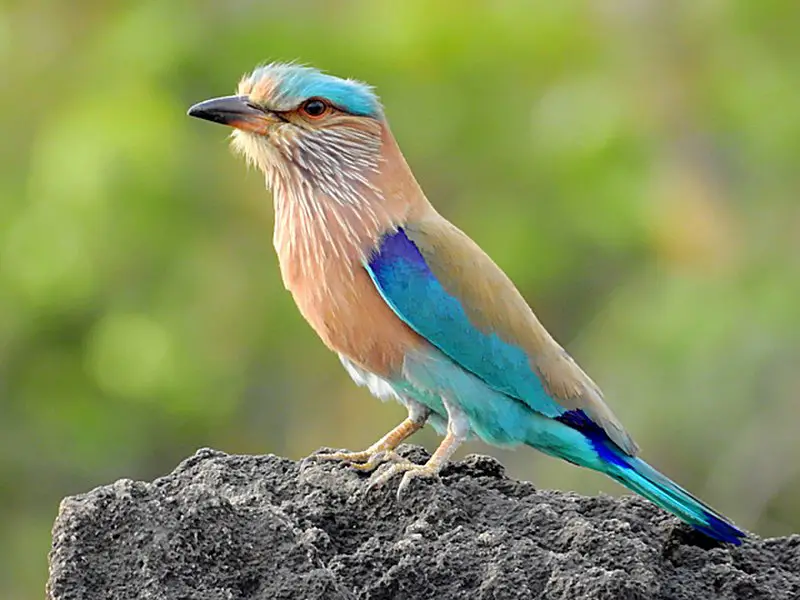
Rollers are birds that belong to the Coraciidae family. They are known for their aerial acrobatics which they display during courtship or territorial flights, earning them their name.
Rollers share similarities with crows in terms of size and shape, but they have a more vibrant appearance like kingfishers and bee-eaters — blues and pinkish or cinnamon browns being the most common colors.
These birds also have an interesting feature: two inner front toes connected together while the outer ones remain separated from each other.
Their impressive flying skills make rollers one of nature’s beauties, captivating us all with its colorful feathers and graceful moves.Scientific classification:
| Kingdom | Animalia |
| Phylum | Chordata |
| Class | Aves |
| Order | Coraciiformes |
| Family | Coraciidae Rafinesque, 1815 |
Also Featured In: Comoros birds, Most Common Nature Birds
38. Flamingos
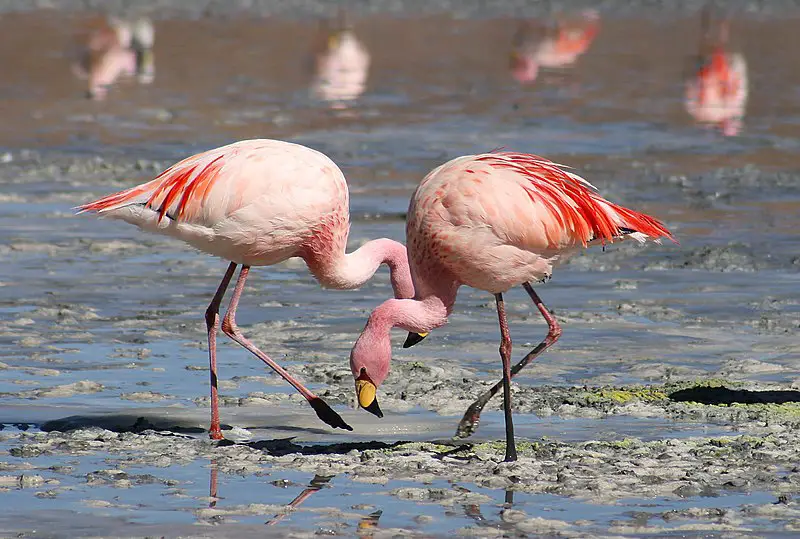
Flamingos are a type of water bird that belong to the Phoenicopteriformes group. They are known for their distinctive pink coloring and long, thin legs.
Flamingos are closely related to grebes and are part of the Mirandornithes clade. These birds are well-documented in the fossil record, with some of their extinct relatives dating back millions of years.
In fact, the first known member of the Phoenicopteridae family was a bird called Elornis. Flamingos are known for their unique feeding habits, which involve using their beaks to filter food from the water.
They are also social creatures that typically live in large groups called colonies.
Overall, flamingos are fascinating creatures with a long history on our planet.Scientific classification:
| Kingdom | Animalia |
| Phylum | Chordata |
| Class | Aves |
| Clade | Mirandornithes |
| Order | Phoenicopteriformes Fürbringer, 1888 |
Also Featured In: Common Algerian Birds , Most Common Romanian Birds
39. Greater Spotted Eagle
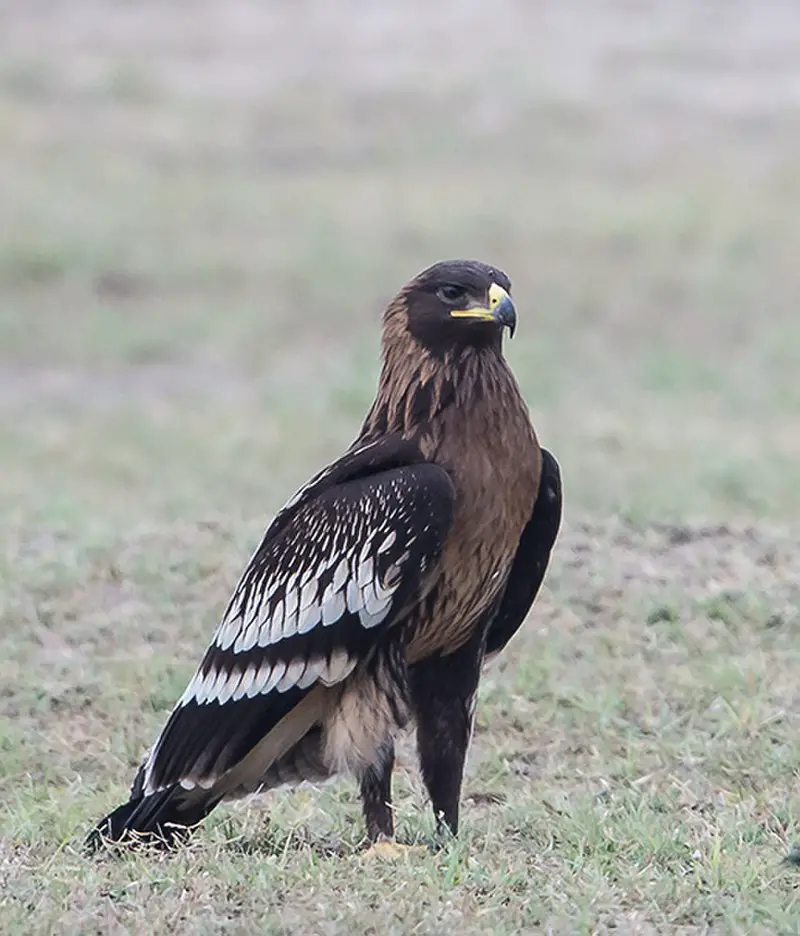
The greater spotted eagle is a large bird of prey that belongs to the Accipitridae family. It is also known as the spotted eagle and has feathered legs that indicate its membership in the subfamily Aquilinae, also called the “booted eagles.”
Although previously considered a member of the Aquila genus, it has been recently reclassified in the Clanga genus, along with other eagle species.
The greater spotted eagle is a magnificent bird with a wingspan of up to 2 meters and is known for its hunting skills.
Due to habitat loss and degradation, its population has been declining, leading it to be classified as a vulnerable species on the IUCN Red List.
Conservation efforts are needed to ensure the survival and protection of this majestic bird.Scientific classification:
| Kingdom | Animalia |
| Phylum | Chordata |
| Class | Aves |
| Order | Accipitriformes |
| Family | Accipitridae |
| Genus | Clanga |
| Species | C. clanga |
Also Featured In: Syrian Birds You Need to Know, Belarus Birds You Should Know
40. Sittidae
The Sittidae bird, commonly known as nuthatches, is a family of passerine birds found throughout the world, except for Australia and the polar regions.
These birds are small, compact, and have strong bills that are perfectly adapted for cracking open nuts and seeds.
Nuthatches typically have short tails and strong legs that enable them to climb up and down trees with ease, often moving in a spiral pattern.
They have an unusual habit of walking headfirst down tree trunks and branches, probing and inspecting crevices for food. Nuthatches are primarily insectivores, but also feed on seeds, nuts, and fruits.
They are known for their distinctive calls, which are often loud and repetitive. Some species of nuthatches, such as the red-breasted nuthatch, are migratory, while others are year-round residents.
Overall, the Sittidae bird is an intriguing and adaptable species that plays an important role in the ecosystems they inhabit.